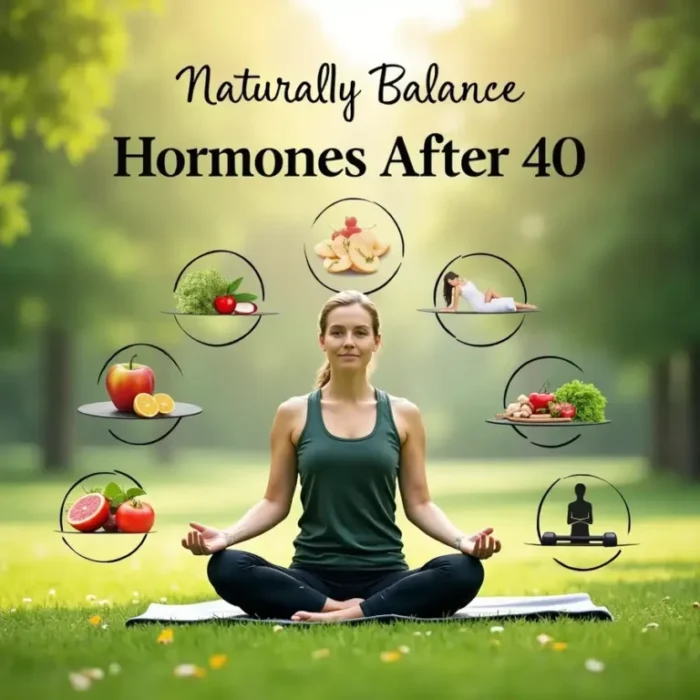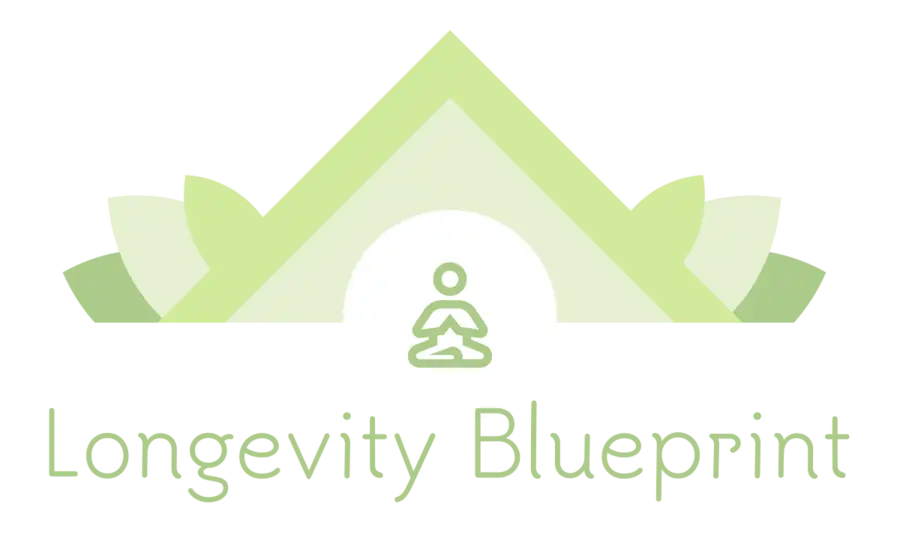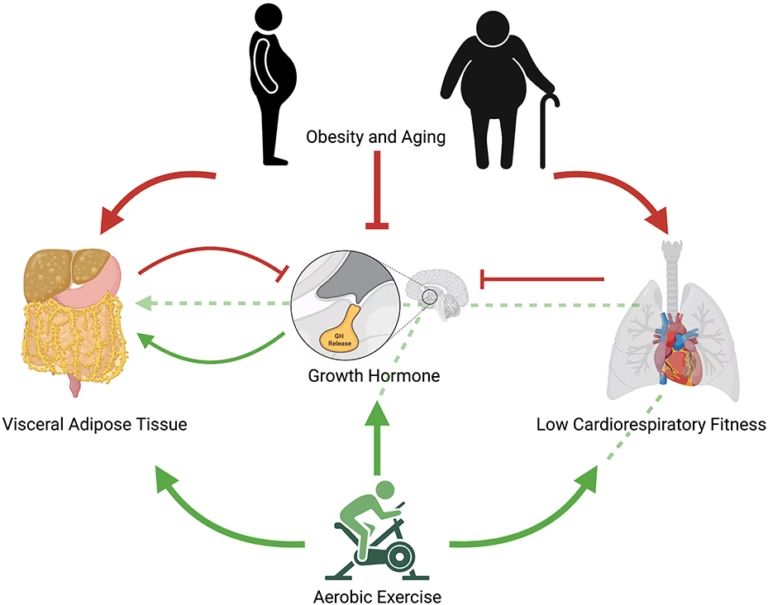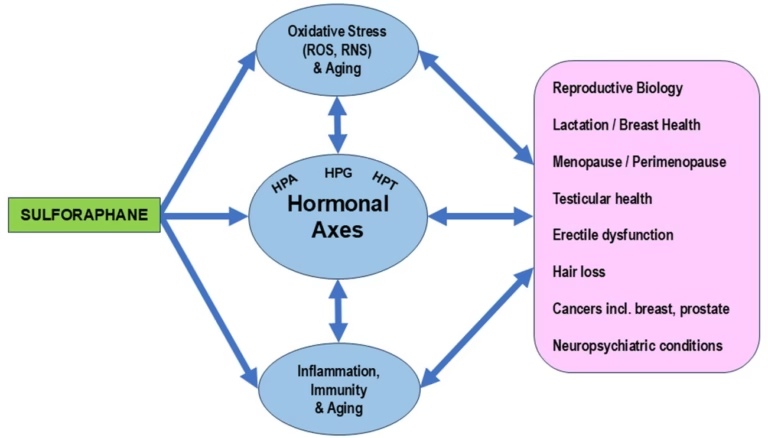How to Naturally Balance Hormones After 40: A Doctor-Approved Guide

Did you know that hormone imbalances can increase your risk of obesity, diabetes, and heart disease by a lot?
Your hormone levels naturally decline after age 40, and some people experience more dramatic changes than others. About 35-50% of women experience symptoms like hot flashes, night sweats, and irregular periods during this transition. The experience of perimenopause usually lasts three to four years, though it can range from a few months to a decade.
Balancing hormones naturally becomes vital during this phase. These natural changes can substantially impact your health. Sleep disruption affects 40% of women in perimenopause. Lower estrogen levels also raise the risk of osteoporosis and cardiovascular disease.
We’ve experienced these challenges ourselves. This complete, doctor-approved piece will help you direct your hormonal health naturally. You’ll discover practical, science-backed ways to support your hormone balance after 40 through nutrition strategies, exercise recommendations, and stress management techniques.
Understanding Hormonal Changes After 40
The trip through hormonal changes doesn’t start abruptly at 40. Your body goes through a gradual process that picks up speed in your fourth decade. Learning how to balance hormones naturally after 40 starts with understanding these changes.
How hormones naturally change with age
Our bodies produce fewer hormones earlier than most people realize. To cite an instance, men’s testosterone levels drop about 1% each year starting between ages 20-30 [1]. Men and women both experience declining DHEA (dehydroepiandrosterone) levels by their third decade [1].
Women typically start perimenopause in their mid-40s, though some experience it earlier [2]. This phase lasts about four years but can stretch to eight years [2]. The ovaries make less estrogen during this time, which leads to major hormonal swings.
Common hormones affected after 40
These hormones show the most changes after 40:
- Estrogen and Progesterone: Women’s levels drop and fluctuate during perimenopause, which causes irregular periods and other symptoms [3].
- Testosterone: Men experience ongoing gradual drops that affect muscle mass, energy, and sexual function [1].
- Growth Hormone (GH): Drops 1-2% yearly and changes metabolism and body composition [1].
- Thyroid Hormones: People face more thyroid disorders after 40, which affect energy and metabolism [4].
- Cortisol: This stress hormone’s patterns can shift and disrupt sleep and immune function [4].
Signs your hormones may be imbalanced
These symptoms might signal it’s time to focus on women’s hormones after 40:
- Physical changes: Your periods become irregular, you experience hot flashes, night sweats, weight changes (especially around your belly), and lose muscle mass [2][5].
- Sleep disruptions: You might face insomnia and night sweats that affect your sleep [2].
- Mood alterations: You could feel irritable, anxious, depressed, or experience mood swings that seem out of proportion [3][4].
- Cognitive effects: You might notice problems with short-term memory and focus [3].
- Sexual health changes: Your libido might decrease, and you could experience vaginal dryness and discomfort during sex [2][6].
Bone density becomes a concern as lower estrogen raises osteoporosis risk [1]. Your cholesterol levels might also change as estrogen drops, which could increase heart disease risk [4].
You don’t have to accept these changes as inevitable. This piece shares strategies for natural hormone balance that can help reduce these symptoms and boost your overall health.
Resources for further reading:
- Mayo Clinic: Perimenopause
- Cleveland Clinic: Hormonal Imbalance
- National Institute on Aging: Hormones and Menopause
Nutrition Strategies to Balance Hormones Naturally
Your plate holds powerful tools to balance hormones naturally after 40. The food you eat creates the foundation that produces and regulates hormones. This makes your dietary choices a vital part of this transitional time.
Essential nutrients that support hormone production
Several key nutrients build hormones in your body. The thyroid gland concentrates selenium that helps optimize thyroid function and affects your immune system and cognitive health by a lot [7]. Women with thyroid issues often lack Vitamin D, which supports bone health—especially when hyperthyroidism can lead to bone loss [7]. Your body needs extra attention with B12 and magnesium. Magnesium helps regulate cortisol and supports estrogen balance [8]. B vitamins play a vital role in brain function and hormone production [9].
Foods that help regulate women’s hormones
The right foods on your plate become essential to support your hormones:
- Cruciferous vegetables: Broccoli, cauliflower, and kale contain compounds that promote healthy estrogen metabolism [8]
- Healthy fats: Avocados, olive oil, and salmon provide building blocks for hormones while reducing inflammation [10]
- Fiber-rich foods: Flaxseeds, particularly high in lignans, help balance estrogen levels by promoting elimination of “spent” estrogen [11]
- Quality proteins: Your body needs these to produce hormones. Try to get 25-30 grams per meal to decrease hunger hormones and increase satiety signals [12]
Meal timing and hormone balance
The time you eat matters almost as much as what you eat. Research shows that meals that line up with your natural circadian rhythm influence food choices and energy balance [1]. Late night eating relates to higher BMI and poor food choices [1]. On top of that, it helps to keep blood sugar stable throughout the day to support hormone regulation. This prevents insulin resistance, which becomes more common after 40 [10].
What to avoid for better hormone health
Some foods can disrupt your hormonal harmony. Cut back on added sugars since they lead to insulin resistance [3]. Processed foods with artificial sweeteners can change gut bacteria and affect hunger and satiety hormones [10]. Alcohol interferes with many hormonal processes, from blood sugar control to estrogen metabolism [10]. Focus on nutrient-dense whole foods that support your hormonal systems instead of thinking about restrictions.
Resources:
- National Institutes of Health: Office of Dietary Supplements
- Cleveland Clinic: Hormone Health
- Harvard Health: Women’s Hormone Health
Movement and Exercise for Hormone Regulation

Image Source: Women’s Health
Physical movement works as a powerful way to achieve natural hormone balance after 40. Research shows exercise can modify your hormonal profile in beneficial ways.
How physical activity affects hormone production
Exercise triggers immediate hormonal responses that change with intensity and duration. These reactions lead to temporary increases in growth hormone, testosterone, and DHEA, along with changes in cortisol [13]. These changes help us adapt to training, build strength, and improve endurance [14].
Women benefit greatly because regular physical activity lowers circulating estrogen levels [15]. The reduction happens whatever your menopausal status and becomes more noticeable with high-intensity exercise [16]. Weight loss alone doesn’t explain this effect completely, which suggests exercise directly affects hormone metabolism [16].
Best exercises for women over 40
Our exercise priorities need to adapt as our hormones change with age:
- Strength training: You need this to counter the 1% yearly muscle mass loss that starts after 40 [17]. This type of training revs up metabolism, helps insulin sensitivity, and builds bone density—vital as estrogen drops [2].
- Walking: This simple activity offers amazing benefits with little stress. It lowers cortisol levels and improves heart health [2]. A walk after meals helps keep blood sugar stable [18].
- Yoga and Pilates: These exercises enhance flexibility, build core strength, support pelvic floor health, and lower stress hormones [2].
- Swimming: This non-weight bearing cardio helps people with joint problems while improving glucose control and insulin sensitivity [2].
Finding the right exercise intensity
Your body needs special attention when exercising after 40. Exercise benefits you but also stresses your body [19].
People with unbalanced cortisol or poor sleep should start with gentle movement. This builds stress resilience before adding intensity [19]. Keep HIIT workouts to 2-3 times weekly for 20-30 minutes instead of doing them daily [17].
The timing of your workouts might matter too. Research hints that strength training during the follicular phase (first half of menstrual cycle) could work better than during the luteal phase [14].
Your body tells you what works best. Ask yourself: “After exercise, do I feel nourished or depleted?” [19]. This simple question guides you toward exercise that supports your hormonal health.
Resources:
- American College of Sports Medicine
- National Institute on Aging: Exercise and Physical Activity
- North American Menopause Society
Lifestyle Habits That Support Natural Hormone Balance

Image Source: Trendvisionz
Your daily lifestyle habits are a vital part of how to naturally balance hormones after 40. These small choices create the foundation for hormonal harmony.
Sleep quality and hormone production
Quality sleep is the life-blood of hormonal health. Your body regulates significant hormones like cortisol, ghrelin, leptin, and growth hormone during sleep [12]. A single night of poor sleep can increase cortisol, ghrelin, and growth hormone while reducing leptin levels [6]. This disruption guides your body toward higher glucose levels and insulin resistance among other metabolic changes [6].
You need at least 7 hours of high-quality sleep each night to regulate your hormones properly [12]. Of course, less blue light exposure from devices before bed helps maintain your natural circadian rhythm. Artificial light can disrupt your melatonin production [6].
Stress management techniques
Chronic stress can hijack your hormonal systems. Your body produces excess cortisol under stress, which suppresses reproductive hormones like estrogen and progesterone [4]. High cortisol levels over time may cause estrogen dominance that contributes to irregular periods, PMS, and weight gain, especially when you have excess fat around the abdomen [20].
These techniques help manage stress:
- Regular relaxation exercises (yoga, meditation, deep breathing) [21]
- Journaling about thoughts or gratitude [21]
- Building healthy social connections [21]
Environmental factors affecting hormones
Endocrine-disrupting chemicals (EDCs) in everyday products can mimic or interfere with your natural hormones [22]. These substances in cosmetics, food packaging, and cleaning supplies affect everything from reproduction to metabolism [23].
You can reduce exposure by:
- Using products labeled “phthalate-free,” “BPA-free,” and “paraben-free” [23]
- Staying away from synthetic fragrances in personal care items [23]
- Using less plastic for food storage [24]
- Monitoring air quality and opening windows regularly [23]
Resources:
- National Institute of Environmental Health Sciences
- Mayo Clinic: Stress Management
- American Academy of Sleep Medicine
Conclusion
Natural hormone balance after 40 depends on lifestyle changes and healthy habits working together. Science shows that good nutrition, specific exercises, quality sleep, and stress management support optimal hormone function during this vital life phase.
Your focus should be on hormone-supporting foods, regular physical activity, and healthy sleep routines. It also helps to protect yourself from environmental toxins and keep stress levels in check for maintaining hormonal balance.
Achieving hormone balance takes time – it’s a gradual process that needs patience and consistency. The benefits of this natural approach go beyond hormone health and improve your overall wellbeing and quality of life as you age.
These science-backed strategies will help you notice improvements in energy, mood, and physical health within a few months when you start today. Simple, consistent changes create lasting results.
Additional Resources:
- National Institutes of Health: Hormone Health
- Endocrine Society: Hormone Science to Health
- Women’s Health Initiative Research
FAQs
How can I naturally balance my hormones after 40?
To balance hormones naturally after 40, focus on a nutrient-rich diet, regular exercise, quality sleep, and stress management. Include foods like cruciferous vegetables, healthy fats, and fiber-rich options. Engage in strength training and low-impact exercises, aim for 7-8 hours of sleep nightly, and practice relaxation techniques like meditation or yoga.
What are common signs of hormonal imbalance in women over 40?
Common signs include irregular periods, hot flashes, night sweats, weight fluctuations, mood swings, decreased libido, and difficulty sleeping. You may also experience changes in skin texture, hair thinning, and increased fatigue. If you notice these symptoms, it’s advisable to consult with a healthcare professional.
Can exercise help regulate hormones after 40?
Yes, exercise can significantly help regulate hormones after 40. Regular physical activity, especially strength training and moderate-intensity cardio, can boost metabolism, improve insulin sensitivity, and help maintain healthy estrogen levels. However, it’s important to find the right balance and not overexert yourself, as excessive exercise can stress your hormonal system.
What role does nutrition play in hormone balance for women over 40?
Nutrition plays a crucial role in hormone balance. Eating a diet rich in whole foods, lean proteins, healthy fats, and plenty of fruits and vegetables can support hormone production and regulation. Key nutrients like selenium, vitamin D, B vitamins, and magnesium are particularly important. Additionally, limiting processed foods, added sugars, and alcohol can help maintain hormonal equilibrium.
How does stress affect hormone balance in women over 40?
Chronic stress can significantly disrupt hormone balance in women over 40. It can lead to elevated cortisol levels, which may suppress reproductive hormones and contribute to issues like irregular periods and weight gain. Managing stress through relaxation techniques, regular exercise, and maintaining healthy social connections can help mitigate these effects and support overall hormonal health.
References
[1] – https://pmc.ncbi.nlm.nih.gov/articles/PMC6538463/
[2] – https://happyhormonesforlife.com/exercise-for-women-over-40/
[3] – https://recreation.gsu.edu/2023/09/28/ways-to-support-females-hormones-through-nutrition/
[4] – https://www.hormonerebalance.com/how-to-navigate-hormonal-changes-for-women-40/
[5] – https://www.healthline.com/health/hormonal-imbalance
[6] – https://www.medicalnewstoday.com/articles/324031
[7] – https://wexnermedical.osu.edu/our-stories/four-nutrients-to-help-your-hormone-imbalance
[8] – https://www.envizionmedical.com/blog/11-superfoods-to-naturally-balance-hormones-after-40
[9] – https://www.premierob-gyn.com/blog/essential-vitamins-and-supplements-to-balance-hormones
[10] – https://www.eatingwell.com/article/7805452/hormone-balancing-foods-how-diet-can-help/
[11] – https://nutrition4change.com/articles/top-10-foods-to-restore-hormone-balance/
[12] – https://www.healthline.com/nutrition/balance-hormones
[13] – https://pmc.ncbi.nlm.nih.gov/articles/PMC11591795/
[14] – https://www.rupahealth.com/post/exercise-affects-on-womens-hormones
[15] – https://breast-cancer-research.biomedcentral.com/articles/10.1186/s13058-015-0647-3
[16] – https://pmc.ncbi.nlm.nih.gov/articles/PMC4635995/
[17] – https://www.tryonmed.com/resource/exercise-for-menopause-3-ways-to-adapt-your-workouts-after-40/
[18] – https://www.womenshealthmag.com/uk/fitness/a41639225/menopause-exercise/
[19] – https://integrativewomenshealthinstitute.com/exercise-and-hormones-for-women-over-40/
[20] – https://www.ccfmed.com/blog/10-simple-ways-to-reduce-stress-for-better-hormones
[21] – https://www.mayoclinic.org/healthy-lifestyle/stress-management/in-depth/stress/art-20046037
[22] – https://www.niehs.nih.gov/health/topics/agents/endocrine
[23] – https://www.endocrine.org/patient-engagement/endocrine-library/edcs
[24] – https://coyleinstitute.com/habits-affect-hormones/





